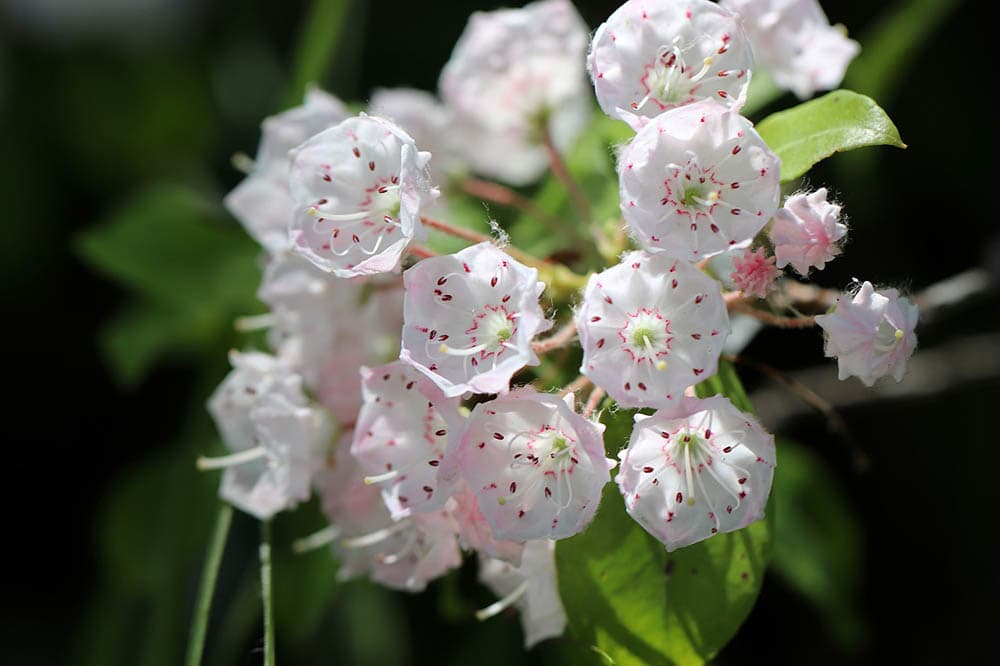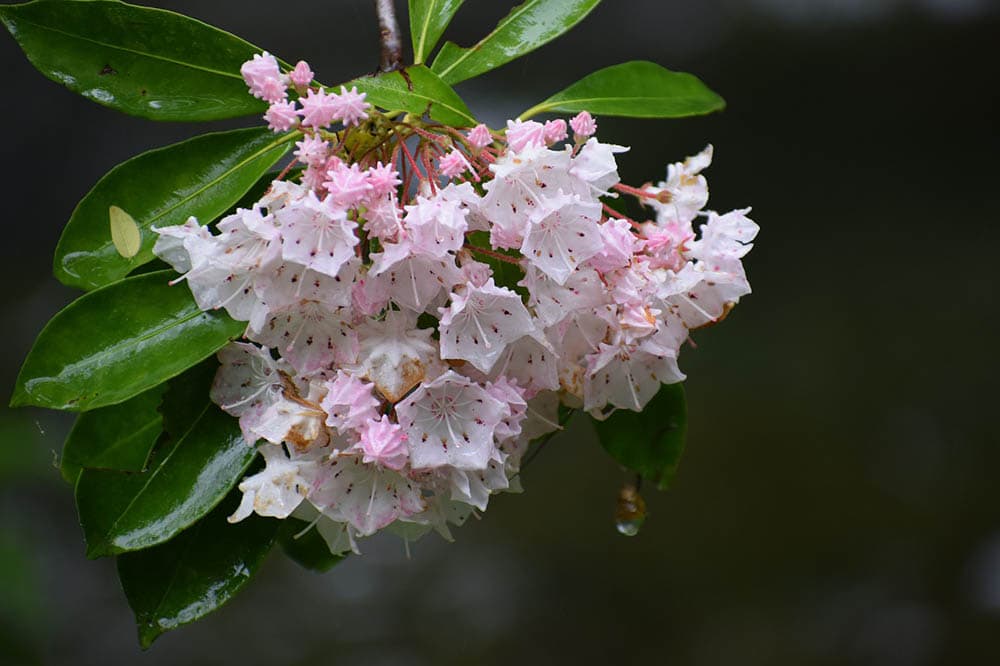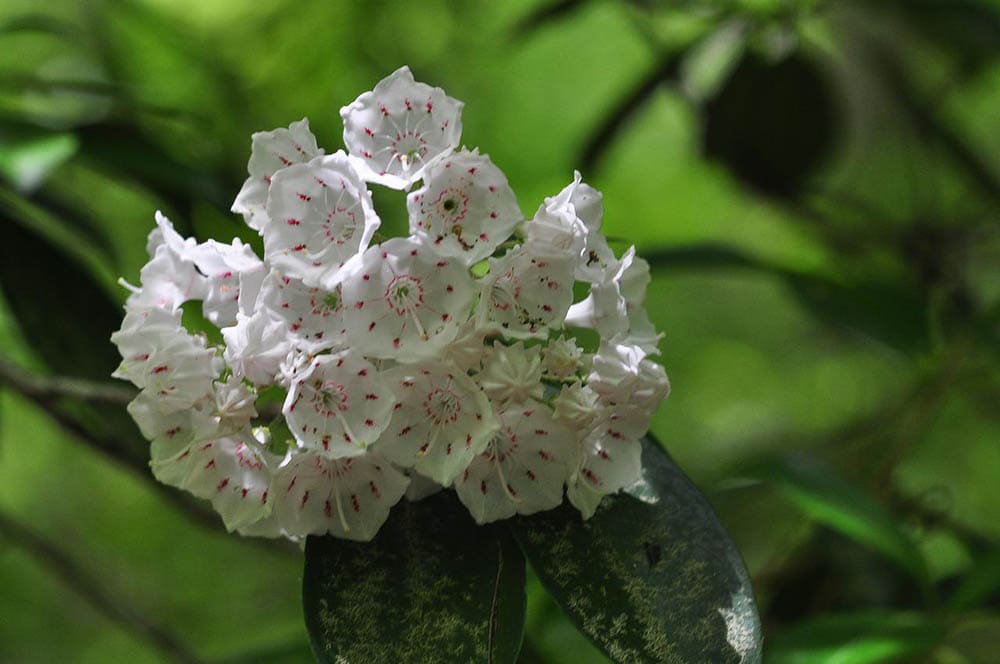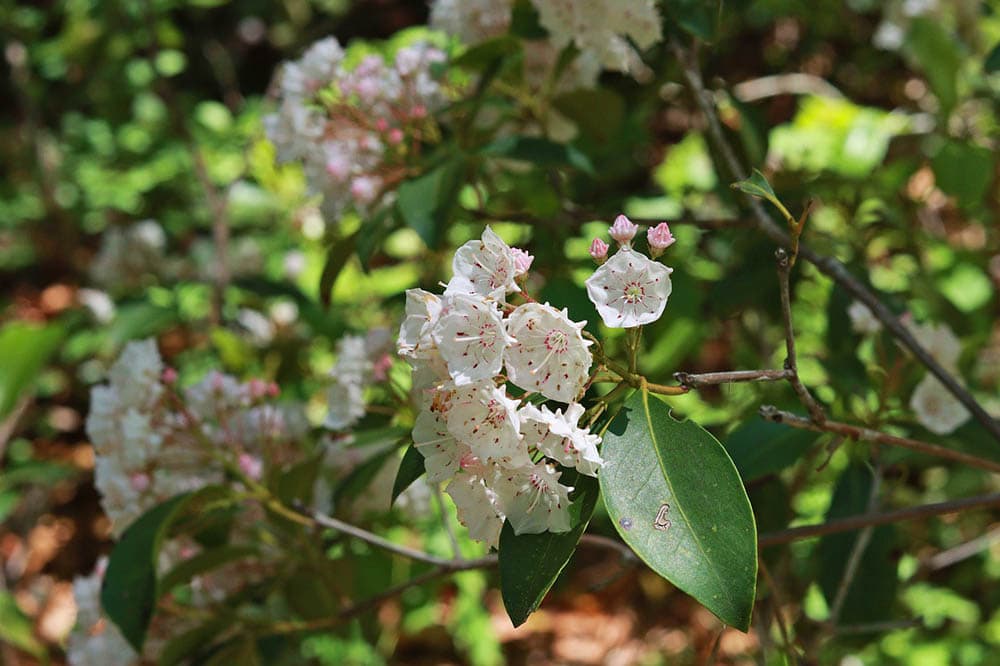What Is the State Flower of Pennsylvania? Facts & FAQ
-
Pete Ortiz
- Last updated:

Pennsylvania is one of the US’s most vibrant, diverse, and colorful states. For decades, it’s been the industrial center for strategic natural resources, including steel and coal. It’s also big on railroads and mushroom production. But does it have a state flower, a symbol representing the Keystone state? The answer is yes, and it’s the mountain laurel. Governor Pinchot picked it in 1933.
But why did he choose this flower? How did the government make that decision? Did the citizens of Pennsylvania have a say in that? What’s so special about the mountain laurel? Is it easy to grow in your own garden, or not? And finally, does every American state have a state flower? Keep reading, and you’ll find all the answers!
So, Why the Mountain Laurel?
What’s so special about this flower? That’s probably the first thing that pops into your head. Well, it’s very common in Pennsylvania: it grows practically everywhere, especially if you go to the woods in mid-spring or late summer. Second, it is, indeed, gorgeous and has a tender, lovely shape and color. Visit Pittsburgh or Philly in mid-June, and you’ll be amazed by how beautiful the mountainsides look!
In fact, this flowering shrub can be found in almost every single one of the 67 counties in Pennsylvania. It’s only fair that it was named the state flower. Lastly, the locals wanted to protect it, and that’s why they gave their votes to the mountain laurel. And that’s how this evergreen shrub with a star-like shape and white/pink petals became a symbol of Pennsylvania.

When Did It Become Pennsylvania’s State Flower?
It happened 89 years ago when the country was still struggling with the Great Depression. Back in 1933, then-Governor Pinchot made mountain laurels (Kalmia latifolia—the scientific name) the official state flower of Pennsylvania. Rumor has it that the man’s wife was fascinated by the beauty of this flower, and that’s what persuaded him to go with it.
Oh, and by the way, it wasn’t the only candidate: pink azaleas were also considered. But, the mountain laurels won the competition and the Governor signed the bill. To this day, the “spoonwood” is Pennsylvania’s state flower. It belongs to the Ericaceae family which includes cranberries, blueberries, and azaleas. A quick note: this plant is also the state flower of Connecticut!
Was There Another Flower Before That?
No, mountain laurels are the first and the only state flower of Pennsylvania. However, this is the only American state that has a “secondary” symbol, and that’s Penngift Crownvetch. It was classified as the state’s beautification and conservation plant in 1982. This plant is commonly used as food for cattle, horses, sheep, goats, and even swine.
On top of that, the Crownvetch serves as an excellent natural source of nitrogen for the soil, not to mention it helps control erosion. Also, it’s quite pretty and has the same pink + white combination of colors on the flowers. Expect it to bloom in mid-June and last for most of the summer.
Are State Flowers a Common Thing in the US?
Yes, every single American state has its state flower. For example, in New York, it’s rose, while South Carolina is represented by the Yellow Jessamine. The very first state flower was introduced in Washington (in 1892; officially, in 1959), and it was the Coast Rhododendron. Just like in Pennsylvania, it’s the acting government that declares it, although it’s usually the people (mostly children) that choose it.
A certain flower is designated as the symbol because it’s native to the land and grows in large numbers. Or it carries historical value and embodies the very essence of that state. This beautiful tradition has been around for hundreds of years. The White House doesn’t have a say in this: it’s up to local authorities (and the citizens) to make that pick.
What About Other Countries?
In the US, all 50 states have a unique flower/symbol, but that’s not always the case with countries around the world. Instead, they have one national flower and maybe some “extra” symbols for different subdivisions. In the UK, all four parts of the Kingdom (England, Scotland, Wales, and Northern Ireland) have their flowers. In France, however, the official national flower is the iris.
The Australians, in turn, have picked the Golden Wattles. In India, it’s the lotus, while in Canada, it’s the maple leaf. The list is quite large: almost every single country out there does have a floral emblem. And, just like in the States, these flowers are endemic and have a prominent place in the history of that country.

Can You Grow Mountain Laurels in Your Garden?
Technically, yes, it’s possible: there are absolutely no restrictions in Pennsylvania regarding growing the mountain laurel “domestically”. And many people grow them for the wood (to make furniture). However, if you want to cultivate it in your backyard, it will take a lot of effort. It needs specific conditions to flourish. In contrast to most wildflowers, the mountain laurel is not a big fan of fertilizers and potting soil mixes.
Instead, the soil has to match the acidity of the rocky terrain that this flower grows on and include certain fungi. As for watering, there’s not a lot of it up in the mountains, so water it moderately. Exposure to limited light is also necessary. With that said, this is a gorgeous flower and will be a perfect addition to any garden. It starts to bloom in May and lasts through mid-June.
What Does It Look Like? Is It Edible?
The mountain laurel can be found throughout the eastern parts of the States. It comes in all shapes and sizes and can reach 40 feet in height, with 4–10 feet being the average height. This is an evergreen shrub, a broad-leaf plant with white-pink flowers. The leaves, in turn, are dark green, and, in contrast to most flowers, they don’t fall off during cold days. Instead, they linger on through the winter.
The mountain laurel leaves are poisonous, though (both to humans and pets). If you swallow them, you’ll instantly feel a burning sensation in your gastrointestinal tract. Abdominal pain, weakness, nausea, and temporary paralysis are common as well. Death is also a side effect of digesting this flower, but it’s a very rare one. So, don’t, under any circumstances, eat a mountain laurel!

When Was It Discovered?
One of the first people to describe the mountain laurel was John Smith, back in 1624. He was amazed by the white-pink petals and the shrub nature of this plant. More than 100 years later (in 1743, to be exact), Mark Catesby, a scientist, defined this “new” flower botanically. However, it wasn’t named after any of these men. Instead, Pehr Kalm, an explorer from Finland, called it Kalmia latifolia.
As mentioned, the flower was picked as the state flower in 1933, and the first official Pennsylvania State Laurel Festival was held 5 years later—in 1938. The celebration was arranged in hopes of fixing the state’s so-so economy and bringing more investments and tourists into the region. The locals really loved the festival and turned it into an annual thing.
Conclusion
It’s safe to say that in Pennsylvania, you can’t drive for five minutes straight without coming across a beautiful field of mountain laurels. And that’s one of the biggest reasons why it’s been the state flower for almost 100 years. It’s the most widespread flower in PA and represents hard work and perseverance, something that the locals know very much about.
That’s exactly why both the government and the citizens came together on this decision to make it the symbol of their fine state. So, the next time you visit the Commonwealth of Pennsylvania, make sure to go up the Appalachian Mountains to see with your own eyes (and maybe through a camera lens) how beautiful the fields of mountain laurels are!
- Com – Great Depression History
- 33 COUNTRIES AND THEIR NATIONAL FLOWERS
- Com – All 50 Official State Flowers
- Wikipedia – List of U.S. state flowers
- Com – State Flowers
- Pennsylvania State Laurel Festival
- Mountain Laurel Pennsylvania’s State Flower
- A Brief History of Pennsylvania’s State Flower
- How the mountain laurel became Pennsylvania’s state flower
- StateSymbolsUSA – Penngift Crownvetch
Featured Image Credit: Nennieinszweidrei, Pixabay
Contents


